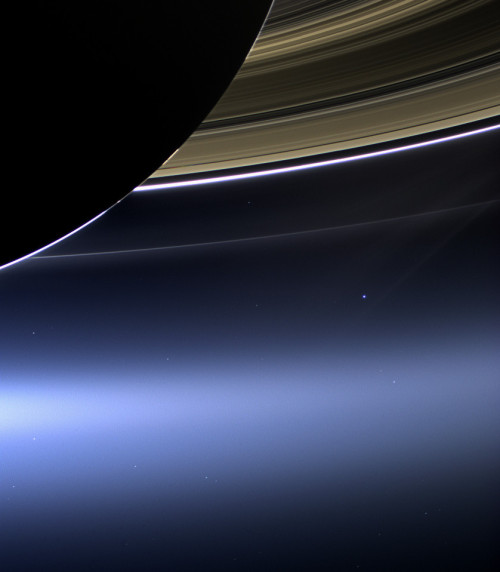Most Underappreciated Starter
most underappreciated starter

More Posts from Secretagentpeptidebond and Others
Brine is your friend

*gags then googles how to get rid of an emulsion*




PUMPKIN-SPICED FLUORESCENCE
Inside a pumpkin, seeds don’t need much chlorophyll—the molecule that helps plants convert light into food—because there isn’t a lot of light deep inside the fruit’s flesh. Instead of chlorophyll, the green seeds are chock-full of protochlorophyllide, a highly fluorescent molecule that glows orange-red under ultraviolet light and can be converted into chlorophyll a by an enzyme in the seeds. The enzyme reduces protochlorophyllide to produce chlorophyll when the enzyme encounters light, which occurs only after the seed has left the pumpkin and therefore needs to start producing its own food so it can grow. Helmut Brandl, a science communicator and professor at ETH Zurich, extracted this protochlorophyllide by grinding up pumpkin seeds and mixing them with nail polish remover (bottom row).
Submitted by Helmut Brandl
Enter our photo contest here!
Related C&EN content:
Happy Little Plant Cells
Look Deep Inside
just saying carrying around beakers of acid to splash on people is nowhere close to proper PPE
which STEM students you should fight
chemistry: it’s not that STEM students aren’t all nerds, it’s that some of those students carry around beakers of acid. even if you actually manage to punch them, they’ll spill their chemicals on you. also something about constantly drawing hexagons makes people scarily organized. don’t fight chemistry students.
biology: depends. some of them can poison you. but if they’re pre-med, they’ll probably thank you for fighting them, they’re so goddamn stressed. on the other hand, avoid fighting the neuro students. they’ll just set their lab rats on you.
physics: do you know how unnecessarily sidetracked they get? they wouldn’t even fight you. they would just attach you to a spring and calculate your natural frequency as you bounce back and forth until you vomit and don’t want to fight them anymore.
astronomy: yeah you can totally fight them if you can find them. they’re probably in one of those creepy observing domes so if you feel like going out of your way to get attacked by an axe murderer, sure.
geology: they will hit you over the head with rocks and dump your body into a volcano. do not fight the geologists.
math: you can fight the math majors, but there would be no fun in it. they wouldn’t put up much of a fight, their heads are so far in the clouds. they probably wouldn’t even notice getting beaten up if they’re in the middle of a problem.
engineering: look do you want to get hit with a wrench and/or electrocuted
computer science: yes. do it. fight the CS students. every time you’ve ever gotten pissed at a computer, put that rage into your strikes. plus they’ve got such mouths, it’ll be really satisfying. fight them!
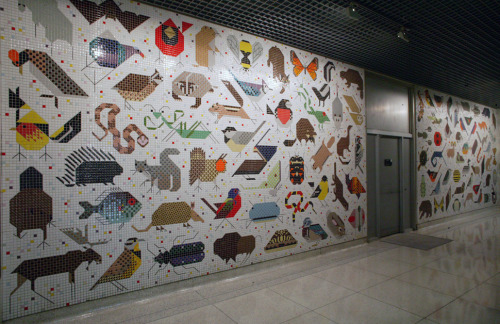
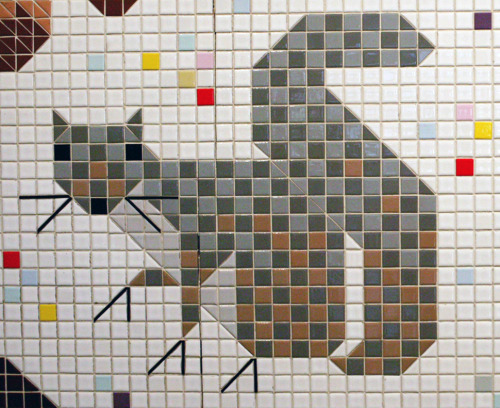
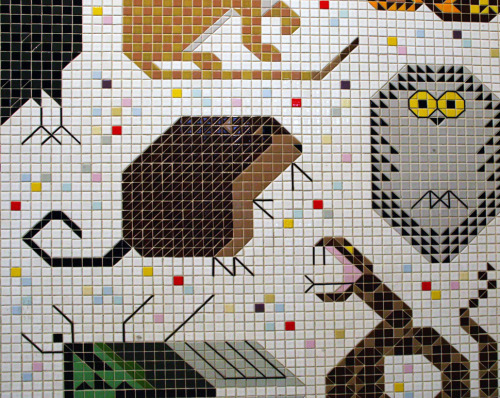
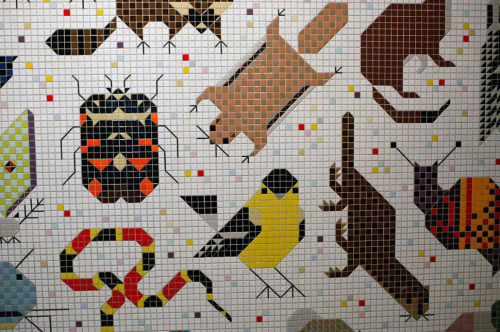
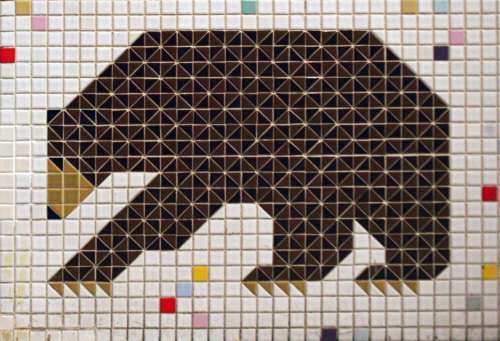
Space For All Species Mural
Charley Harper’s first ever mural ‘Space For All Species’ is located in the John Weld Peck Federal Building at 550 Main St. in downtown Cincinnati. Completed in 1964 the design is comprised of two 18×10½ ft panels that feature over 100 species of North American Animals. The tiles were made by Cambridge Tile Company in Cincinnati, OH. more…

The cellular structure of wood as seen through a Victorian microscope. (via)

What is the shape of a falling raindrop? Surface tension keeps only the smallest drops spherical as they fall; larger drops will tend to flatten. The very largest drops stretch and inflate with air as they fall, as shown in the image above. This shape is known as a bag and consists of a thin shell of water with a thicker rim at the bottom. As the bag grows, its shell thins until it ruptures, just like a soap bubble. The rim left behind destabilizes due to the surface-tension-driven Plateau-Rayleigh instability and eventually breaks up into smaller droplets. This bag instability limits the size of raindrops and breaks large drops into a multitude of smaller ones. The initial size of the drop in the image was 12 mm, falling with a velocity of 7.5 m/s. The interval between each image is 1 ms. (Photo credit: E. Reyssat et al.)



In ‘Wild Design,’ Vintage Illustrations Expose the Patterns and Shapes Behind All Life on Earth
-
 cat-mermaid reblogged this · 3 months ago
cat-mermaid reblogged this · 3 months ago -
 cat-mermaid liked this · 3 months ago
cat-mermaid liked this · 3 months ago -
 vianthegryphon liked this · 1 year ago
vianthegryphon liked this · 1 year ago -
 jungkookerickfan92 liked this · 3 years ago
jungkookerickfan92 liked this · 3 years ago -
 jacy-lasly liked this · 3 years ago
jacy-lasly liked this · 3 years ago -
 rebirthx liked this · 4 years ago
rebirthx liked this · 4 years ago -
 yoshisredsaddle reblogged this · 4 years ago
yoshisredsaddle reblogged this · 4 years ago -
 galariangengar reblogged this · 4 years ago
galariangengar reblogged this · 4 years ago -
 strange-on3 liked this · 4 years ago
strange-on3 liked this · 4 years ago -
 hydroponicparagon liked this · 4 years ago
hydroponicparagon liked this · 4 years ago -
 todesengel1984 liked this · 4 years ago
todesengel1984 liked this · 4 years ago -
 psyllaa liked this · 4 years ago
psyllaa liked this · 4 years ago -
 shinrachamploo liked this · 4 years ago
shinrachamploo liked this · 4 years ago -
 6ad6ro reblogged this · 4 years ago
6ad6ro reblogged this · 4 years ago -
 6ad6ro liked this · 4 years ago
6ad6ro liked this · 4 years ago -
 frogdetective reblogged this · 4 years ago
frogdetective reblogged this · 4 years ago -
 yesitsanusha reblogged this · 4 years ago
yesitsanusha reblogged this · 4 years ago -
 emptybody-brokenmind reblogged this · 4 years ago
emptybody-brokenmind reblogged this · 4 years ago -
 sailorprettycure reblogged this · 4 years ago
sailorprettycure reblogged this · 4 years ago -
 hissatsu-kaiten liked this · 4 years ago
hissatsu-kaiten liked this · 4 years ago -
 kitsunexkai reblogged this · 4 years ago
kitsunexkai reblogged this · 4 years ago -
 kennycrows reblogged this · 4 years ago
kennycrows reblogged this · 4 years ago -
 man-demann liked this · 4 years ago
man-demann liked this · 4 years ago -
 daniellenya reblogged this · 4 years ago
daniellenya reblogged this · 4 years ago -
 chaobears liked this · 4 years ago
chaobears liked this · 4 years ago -
 strawberry-lex liked this · 4 years ago
strawberry-lex liked this · 4 years ago -
 hallaya reblogged this · 4 years ago
hallaya reblogged this · 4 years ago -
 evergarden-owl reblogged this · 4 years ago
evergarden-owl reblogged this · 4 years ago -
 theroyalloser reblogged this · 4 years ago
theroyalloser reblogged this · 4 years ago -
 theroyalloser liked this · 4 years ago
theroyalloser liked this · 4 years ago -
 soul-ji reblogged this · 4 years ago
soul-ji reblogged this · 4 years ago -
 miawinters-archive liked this · 4 years ago
miawinters-archive liked this · 4 years ago -
 itisriv reblogged this · 4 years ago
itisriv reblogged this · 4 years ago -
 itisriv liked this · 4 years ago
itisriv liked this · 4 years ago -
 iures reblogged this · 4 years ago
iures reblogged this · 4 years ago -
 anxious--heart reblogged this · 4 years ago
anxious--heart reblogged this · 4 years ago -
 atelierlynn reblogged this · 4 years ago
atelierlynn reblogged this · 4 years ago
